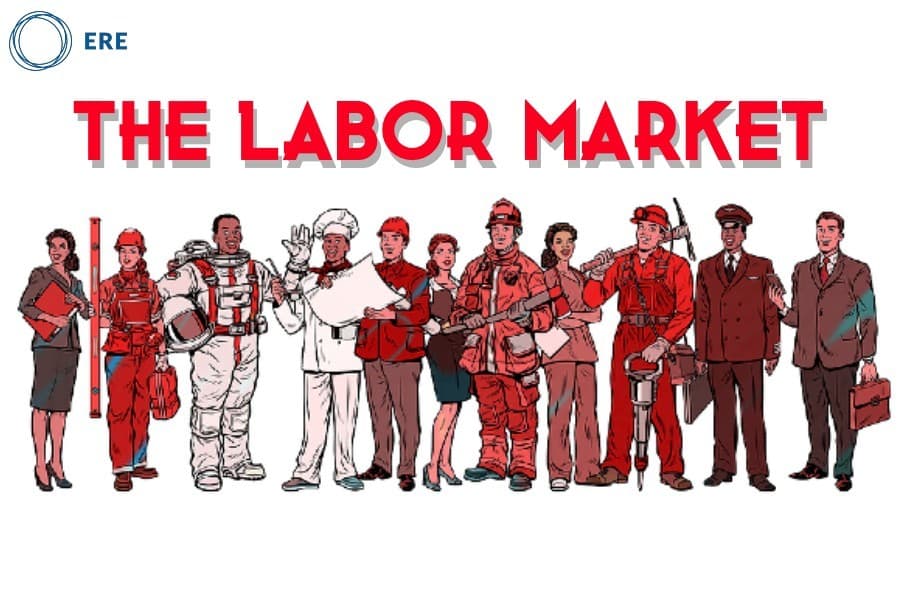Editor’s note: This article marks the first piece by Jay Denton as the new author of “The Labor Market” column. He brings deep expertise in labor issues, and we are thrilled to share his views with you. (Feel free to read more about Jay’s background in his bio below. Meanwhile, the column’s previous columnist, Raghav Singh, will continue to contribute insights over at ERE.net’s sister site, TLNT.)
An important number reported this month has some employers feeling a bit of anguish. However, it could be a sign that the pipeline of talent is about to burst open, a trend that would be welcomed by recruiters.
The number of people quitting their jobs jumped to almost 4 million in April, roughly 2.7% of the workforce. No, that was not a total of the last 12 months, but rather in a single month. Both figures were the highest on record since the stat began being collected a couple of decades ago.
This trend was expected, though: As the vaccine took hold, Covid counts would decline and confidence in the labor market would increase. In theory, the pool of talent would start to expand too — whereas earlier, various aspects of the pandemic caused talent supply to be pent-up for a period, making it harder to recruit employees already entrenched in a role.
Workers would ask themselves: How stable is the new firm? Do I really want to be the last new hire at the company in a time like this? Will I be able to stay remote? What if the economy or impact of the virus changes again? Those questions and a host of others kept many employees at bay, biding their time until there was more clarity.
Now, as individuals reassess “normal” and get comfortable in their current personal and professional lives, it appears the tide is changing and more people are willing to switch jobs. But will it truly result in more hiring?
The Challenges of Supply and Demand
More jobs were added to the U.S. labor market in May (559,000) than the very disappointing April number (279,000), but the results keep falling short of economists’ expectations.
The reasons are wide-ranging and well-documented: unintended consequences of stimulus impact, childcare, lingering fear of the virus, or a combination of multiple other factors. Also some employees are anchored to remote work, while a host of companies are looking for people to work in the office. Disruption will continue in the near-term, but the number of people voluntarily leaving their jobs is a preview of change on the horizon.
Meanwhile, the number of people resigning from their jobs is not all good news for recruiters as a portion of those leaving their current company will not be looking for a new employment opportunity. A growing share of those deciding to quit are retiring and not coming back to the labor force. The Dallas Federal Reserve Bank estimates that 2.6 million people have retired since February 2020, making it harder to get back to pre-pandemic employment levels.
Additionally, the labor market is still strained by millions of people that either remain out of the labor force completely or those who are unable or unwilling to fill one of the record 9.3 million jobs open in the U.S. today.
Demand for talent is at a level that we have never seen. To put the number of open jobs in perspective, there are still 7.6 million fewer people employed today than before the pandemic.
Here’s where things get even more interesting: Prior to the pandemic, approximately 1.5 million jobs were projected to be added to the economy in 2020. That means there are enough open jobs today not only to make up for the pandemic, but also get us back on track for where we would have been otherwise.
If only things were that easy.
The challenge has hit certain industries more acutely. If you have taken an early summer vacation, traveled for business, or simply visited a local restaurant in your area, there is a good chance you’ve seen the impact of fewer workers.
The restaurant and hotel industry represented more than 1.3 million of the job openings in April, double the number of jobs open at the beginning of the year. As virus counts have fallen, restrictions have eased, and demand for travel and a return to leisure activities has exploded. Despite demand, these businesses continue to struggle to find workers, with extra unemployment benefits receiving much of the blame (due to the competitiveness with their normal wages).
Notably, roughly half of states have opted out of the extra benefits by early July, and it is worth watching what impact this will have on hiring for roles especially in the restaurant and hospitality sector.
Winning the Talent War
Even with some of these challenges, the labor market is still on track for a tidal wave of hires in 2021. The headline number typically announced in news outlets is new jobs added to the labor market, but talent acquisition professionals are seeing and working through the churn in the labor market as more employees are being hired to backfill roles, as well as assist with the new jobs being added. That number is much more substantial with what could be a record-breaking 73 million hires on tap.
Lastly employers are facing the largest number of resignations in history, and compensation is a key reason people are moving jobs. Combine that trend with a record number of jobs open and economists and business leaders will be watching wage inflation the remainder of this year. Ultimately, working with hiring managers to bridge the gap between compensation demands and employer headcount budgets will go a long way in winning the talent war.
